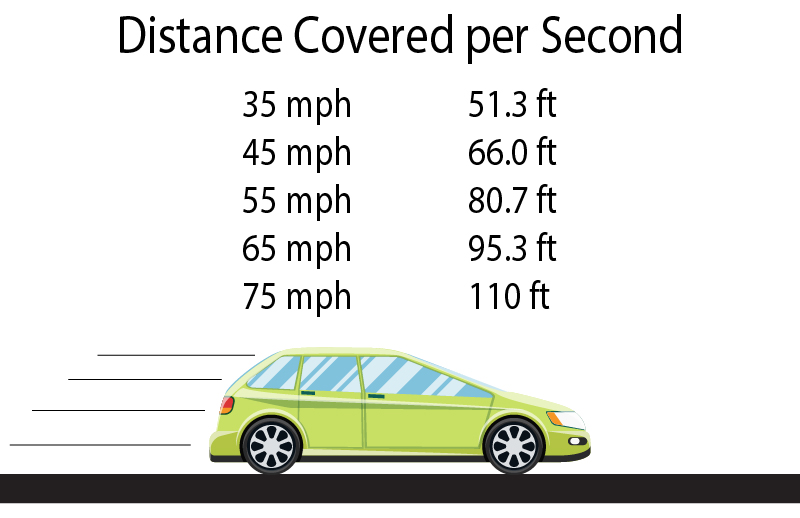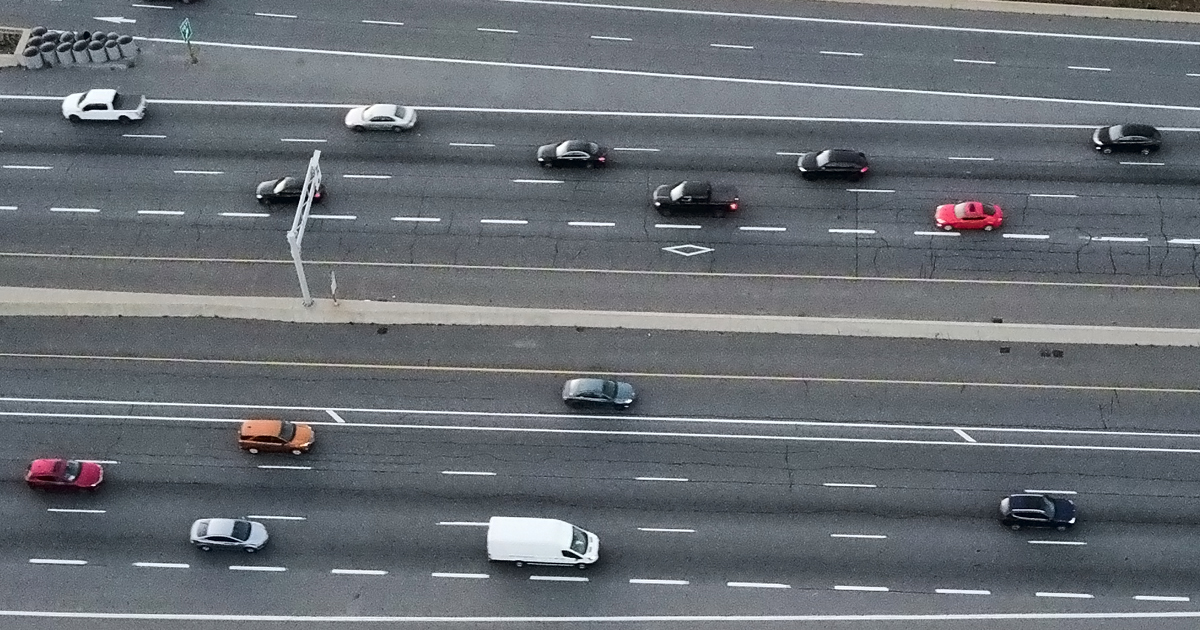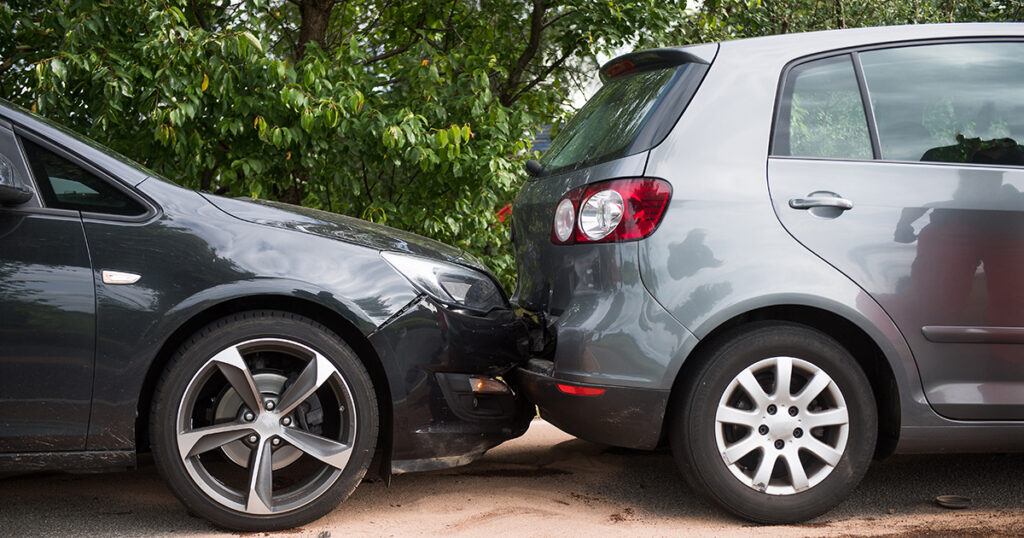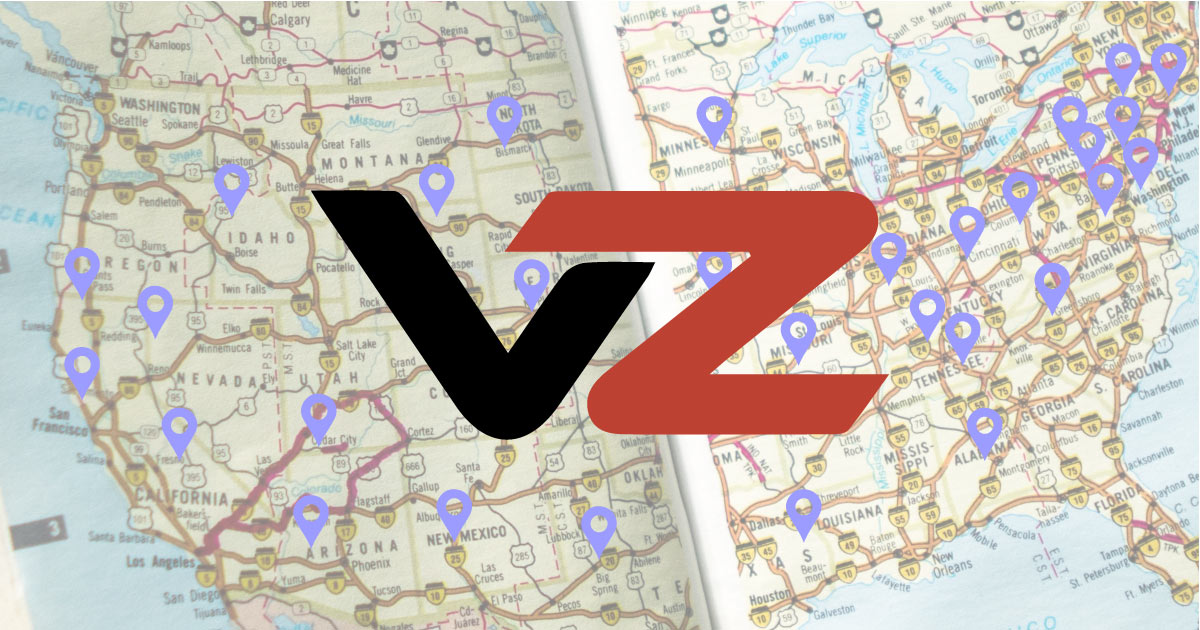The second tip in our Drive Safe series on preventing rear-end collisions is to always maintain a safe following distance. From the first day of driver training, we’ve heard repeatedly that leaving lots of room between our vehicles and those in front of us is crucial. Nevertheless, we see cars and trucks traveling at highway speeds with only a few feet between them and the next vehicle. Let’s look at why this puts us at a significant risk of a rear-end collision.
Human Reaction Time
If you’re a fan of Formula 1 racing, you know that getting a good start is crucial. The best drivers can react to the lights going out in 0.15 to 0.2 second. Quick reactions aren’t just important at the beginning of the race but are needed when racing wheel-to-wheel with another car or correcting for oversteer. Formula 1 drivers spend hundreds of hours yearly on specific training to improve their reflexes.
The average human has a reaction time to a visual stimulus of about 0.25 to 0.3 second.
Putting Speed into Perspective
Talking about vehicle speed in terms of miles per hour doesn’t give us a good perspective on how much ground our cars or trucks cover when on the highway. At 55 miles per hour, a car travels 290,400 feet per hour. That’s equivalent to 4,840 feet per minute, or 80.7 feet per second. Many homes are on lots that are around 80 feet deep. Think about traveling that distance in one second.
Let’s link these two pieces of information. If the best reaction times are 0.15 second, a vehicle traveling 55 miles per hour covers just over 12 feet between the moment when you see something and when you can start moving your foot to the brake pedal. For the average driver with a (still very fast) 0.25-second reaction time, the vehicle would travel just over 20 feet. At 65 miles per hour, those distances are 14.3 and 23.8 feet.

Following Too Closely Is Dangerous
The length of the average vehicle on the road is around 15 feet. If the driver in front of you on the freeway slams on the brakes, and you’re only one car length behind, you simply can’t react in time to apply your brakes and avoid colliding with that vehicle. While many driver education agencies suggest leaving at least two seconds (160 to 200 feet) between your vehicle and the one in front of you on the freeway, more is always better.
Understand Your Vehicle’s Capabilities
Let’s talk about stopping distances. Sports cars like a Toyota Supra or Porsche Boxster can stop from 60 miles per hour in 115 and 119 feet, respectively. A small SUV like a Honda CR-V or Hyundai Tucson requires about 130 feet to stop from 60 miles per hour. Full-size trucks and SUVs like the RAM 1500, Lincoln Navigator or Jeep Grand Cherokee need 150 feet or more. Some electric vehicles with heavy battery packs require over 140 feet to stop.
Suppose you’re in a large or heavy vehicle, are carrying cargo or even have a full complement of passengers on board and are following a car that can stop faster. In that case, you must leave even more distance between vehicles as your stopping distance will be longer.

Maintain Safe Following Distances
The math and physics outlined above prove that following too closely is a recipe for disaster in an emergency. Leaving an extra second between your car and the vehicle in front of you is an easy way to prevent costly and dangerous rear-end collisions. The Vision Zero Automotive Network team wants you to arrive at your destination safely. Maintaining a safe following distance might be all it takes. Drop by a local mobile enhancement retailer to learn about technologies like blind spot monitoring and rear-vision cameras that can help you stay aware of the area around your vehicle. You can find a top-quality retailer near you using our Dealer Locator.


